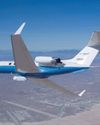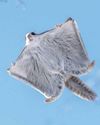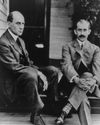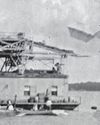The activism of women was impossible to miss during the Progressive Era. From labor strikes and grassroots campaigns to the crusade for the vote, women mobilized in large numbers.

In the New York City garment industry, tens of thousands of Jewish and Italian immigrant women labored in crowded and often dangerous factories and sweatshops. A number of small strikes broke out in October 1909. One young strike leader—Clara Lemlich—made history. She had been advised by male labor leaders to proceed cautiously. Instead, at a mass meeting the following month, she turned the struggle into something much larger. “I am a working girl, one of those who are on strike against intolerable conditions,” she declared, “I offer a resolution that a general strike be declared—now!” The crowd went wild, and a general strike of women garment workers began. From November 1909 to February 1910, between 20,000 and 40,000 women—many of them teenagers—struck their employers. They demanded higher wages, shorter working hours, paid overtime, and union recognition.
Members of the local branch of the International Ladies’ Garment Workers’ Union Local 25 gathered in mass meetings in the evening and marched in picket lines during the day. Their protest was difficult and dangerous. Employers hired thugs and private security guards to harass and beat the strikers. Police often arrested picketers. One account put the number of arrests in the strike’s first month at 771 people.
Law enforcers attacked the strikers’ supporters as well. The Women’s Trade Union League had been formed in 1903 to promote women’s unionization. Middle-class and elite women dominated its membership. When they joined the picket lines in a show of support for working women, their privileged backgrounds didn’t protect them from abuse and arrest. The violence directed against the women strikers and their allies attracted considerable attention in the press.
This story is from the April 2017 edition of Cobblestone American History Magazine for Kids.
Start your 7-day Magzter GOLD free trial to access thousands of curated premium stories, and 8,500+ magazines and newspapers.
Already a subscriber ? Sign In
This story is from the April 2017 edition of Cobblestone American History Magazine for Kids.
Start your 7-day Magzter GOLD free trial to access thousands of curated premium stories, and 8,500+ magazines and newspapers.
Already a subscriber? Sign In

Eye in the Sky
An interview with Joe Piotrowski

Airborne Animals
Humans have taken to the skies in balloons, gliders, and airplanes-but we're not alone among the clouds. Animals of all sorts have evolved to harness wind power.

TAKING OFF
The Wright brothers expected airplanes to “take off,” but even they might be amazed at the way the airline industry has become big business. In the past, it was expensive to send something by plane.

GROWTH OF AN INDUSTRY
After their historic flight at Kitty Hawk in 1903, Wilbur and Orville Wright returned to Dayton, Ohio. They spent the next few years making adjustments and building additional versions of their powered aircraft in their bicycle shop.

WHY KITTY HAWK?
The Wright brothers searched carefully for the best place to test their gliders and flying machines. Their main concern was for good, steady winds. But they also hoped to find a remote location to allow them to perform tests away from the public eye.

Two Brothers From Ohio
Most people do not realize that the Wright brothers—Wilbur, born in 1867, and Orville, born in 1871—performed various scientific experiments before inventing their aircraft. For as long as anyone in their hometown of Dayton, Ohio, could remember, the Wright boys had worked on mechanical projects.

A Helping Hand
May 6, 1896. A group of people who had gathered beside the Potomac River, just south of the U.S. capital, grew quiet. Then, it erupted in cheers as a small, unmanned aircraft took to the skies and flew for more than half a mile. The flight came seven years before the Wright brothers’ first manned, powered flight. The inventor of the aircraft was Dr. Samuel Pierpont Langley.

THE IDEA MEN
People dreamed of flying thousands of years before the Wright brothers found success near Kitty Hawk, North Carolina. These dreamers, such as Leonardo da Vinci, studied birds flying and imagined how humans might do the same—if only they had wings. Other men developed a more hands-on approach to the topic. Early inventors made wings of cloth, glue, and feathers and tied these creations to their arms in an attempt to imitate nature.

Da Vinci's 4 Designs
Have you ever wondered how a bird flies? Leonardo da Vinci (1452–1519) did. He thought that understanding how a bird flies would provide the key to human flight. So, what did da Vinci learn from birds?

Silken Wings
Seven hundred years before the Wright brothers began experimenting with human flight, the Chinese had already mastered its secrets—with kites.